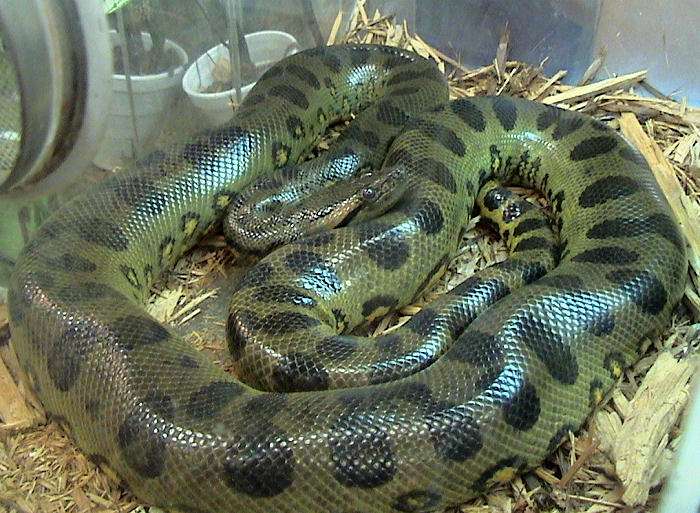
Description:
Scientific name: Eunectes murinus
Life span: About 10 years
One of the biggest snakes in the world is the green anaconda. Males are much smaller than females. The anaconda has alternating oval black spots on a dark green background. Around the sides of its body are splotches with centers that are similar and yellow-ochre. It has a broad, big head. It can see and breathe while being mostly submerged thanks to the placement of its eyes and nostrils on top of its skull.
Native Region/Habitat
East of the Andes in South America are countries like Colombia, Venezuela, the Guianas, Ecuador, Peru, Bolivia, Brazil, the island of Trinidad, and as far south as northern Paraguay where you can find Eunectes murinus. “America” is the designated type of locality. Anacondas are mostly found in the tropical rainforests of the Amazon and Orinoco basins, where they inhabit swamps, marshes, and slow-moving streams. On land they are heavy, but in the water they are svelte and sneaky.

Behavior:
The majority of their lives are typically spent in or near water for the mostly nocturnal anacondas. When swimming, they have the capacity to reach rapid speeds. Their snouts typically protrude above the water’s surface while they float. The anaconda strikes (without eating or swallowing its target) and coils its body around it as the prey passes by or pauses to drink. The snake then tightens its jaws till the prey is smothered.
Care As a pet/In captivity:
- Carnivores are anacondas. They consume pigs, fish, capybara, rabbits, and rodents in the wild. Hatchling snakes can be fed mice, but larger animals like rabbits, chickens, and pigs are needed for adult snakes.
- Juvenile anacondas can live in cages similar to this one or 50-gallon aquariums. If at all possible, you want your snake to be able to extend all the way. To put it bluntly, a larger enclosure for an anaconda is preferable. Undoubtedly, a Green Anaconda will require an enclosure that is between 75 and 100 square feet in size.
- Anacondas require temperatures of 75 to 80°F at night and 80 to 92°F during the day. These Zacro heat lights do an excellent job at supplying heat.
- Carnivores are anacondas. They consume pigs, fish, capybara, rabbits, and rodents in the wild. Hatchling snakes can be fed mice, but larger animals like rabbits, chickens, and pigs are needed for adult snakes.
Table





